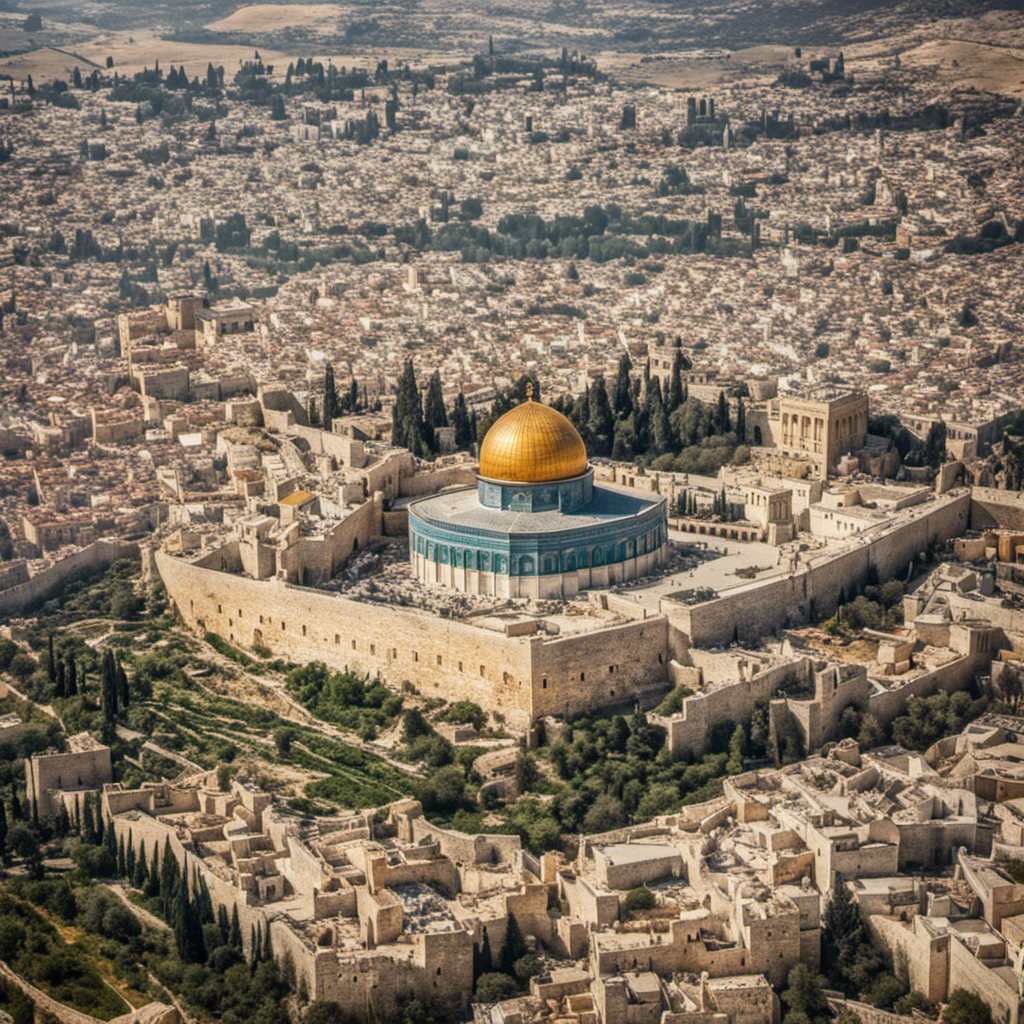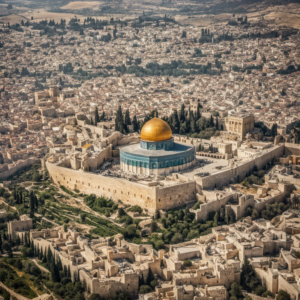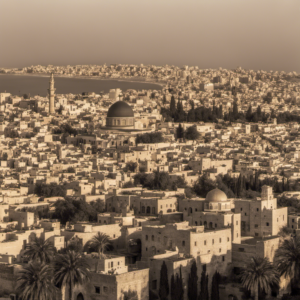Introduction
The Israel-Palestine conflict has been a long-standing and complex issue that has captured global attention for decades. It involves a clash between two nations, Israel and Palestine, both with historical and religious ties to the land they claim as their own. Understanding the conflict requires delving into the historical background and the key issues that have fueled the tensions.
Overview of the Israel-Palestine Conflict
The Israel-Palestine conflict revolves around the territorial dispute between Israelis and Palestinians over the land known as the Holy Land. Both groups claim ownership of the region, which includes the present-day Israel, Gaza Strip, and West Bank. The conflict has resulted in numerous wars, disputes, and violence that have affected the lives of countless individuals in the region.
Historical background of the conflict
The roots of the Israel-Palestine conflict can be traced back to the late 19th century, during the era of the Zionist movement. The movement aimed to establish a Jewish homeland in Palestine, which was then under the control of the Ottoman Empire. Over time, Jewish immigrants arrived, leading to tensions with the Arab population who also resided in the region. The conflict intensified in the early 20th century with the British Mandate for Palestine and the subsequent partition plan proposed by the United Nations in 1947.
This created rival claims over the land, which eventually led to a series of armed conflicts, including the Arab-Israeli War of 1948. Subsequent wars, territorial disputes, and failed peace negotiations have deepened the divide between Israelis and Palestinians, resulting in an ongoing cycle of violence and unrest.
Due to the complexity and sensitivity of the Israel-Palestine conflict, finding a lasting solution has proven to be a challenging endeavor. The pursuit of peace continues to be a delicate matter that involves negotiations, compromise, and addressing the deep-rooted grievances of both parties involved. [1][2][3][4]
The Birth of Nationalist Movements
Emergence of Zionist and Palestinian Nationalist movements
The Israel-Palestine conflict can trace its roots back to the emergence of two nationalist movements: the Zionist movement and the Palestinian Nationalist movement.
The Zionist movement began in the late 19th century, aiming to establish a Jewish homeland in Palestine. Led by prominent figures such as Theodor Herzl, the movement gained traction as Jews sought refuge from persecution in Europe and a place to reconnect with their historical roots.
On the other hand, the Palestinian Nationalist movement emerged in the early 20th century as a response to growing Jewish immigration and settlement in Palestine. Palestinians, predominantly Arabs, sought to protect their political and cultural rights in the face of perceived displacement and marginalization.
Goals and aspirations of each movement
The Zionist movement sought to establish a sovereign Jewish state in Palestine, which they believed was their historical homeland. They aimed at creating a place where Jews could practice their religion freely, assert their national identity, and ensure their security in the wake of anti-Semitism.
The Palestinian Nationalist movement, on the other hand, aimed to establish an independent Palestinian state in the same geographic area. Palestinians sought self-determination, the recognition of their cultural and national rights, and the right of return for Palestinian refugees who were displaced during the conflict.
These contrasting goals and aspirations laid the groundwork for a deeply entrenched conflict between the two movements, resulting in decades of hostility, territorial disputes, and ongoing peace negotiations.
Overall, the Israel-Palestine conflict is a complex issue with deep historical roots, driven by the aspirations and grievances of both the Zionist and Palestinian Nationalist movements. [5][6][7][8]
Creation of the State of Israel
The Israel-Palestine conflict is rooted in the creation of the State of Israel in 1948. Following World War II and the atrocities of the Holocaust, the international community pledged support for the establishment of a Jewish homeland. As a result, the United Nations proposed a partition plan that would divide Palestine into separate Jewish and Arab states. However, this decision was met with resistance from Arab countries and Palestinians who believed it infringed upon their rights and land.
Impact of the 1948 war on Palestine
The establishment of the State of Israel led to a series of conflicts, including the 1948 war between Arab countries and Israel. This war resulted in significant territorial changes, with Israel gaining control over a larger portion of Palestine than initially proposed in the partition plan. It also led to the displacement of hundreds of thousands of Palestinians, creating a refugee crisis that remains unresolved to this day.
Land allocation and displacement of Palestinians
Following the 1948 war, Israel continued to expand its territory through subsequent conflicts, including the 1967 Six-Day War. The Israeli government implemented policies such as land confiscation and the construction of settlements, resulting in further displacement of Palestinians and the loss of their homes and livelihoods. The issue of land allocation and the displacement of Palestinians remains a major point of contention in the ongoing conflict.
The Israel-Palestine conflict is a complex issue with deep historical and political roots. It continues to cause suffering for both Israelis and Palestinians, and a resolution that addresses the rights of both parties remains a challenge. [9][10][11][12]
Root Causes of the Conflict
Land disputes and territorial claims
The Israel-Palestine conflict is primarily rooted in land disputes and territorial claims. Both Israelis and Palestinians have historical and emotional ties to the land they consider their ancestral home. The establishment of the state of Israel in 1948 led to significant displacement and relocation of Palestinians, which fueled resentment and ongoing tensions.
Since then, numerous conflicts, wars, and peace negotiations have taken place, each attempting to address the issue of land ownership and borders. Settlement construction in the occupied territories, particularly in the West Bank and East Jerusalem, has been a major point of contention, as Palestinians see it as an obstacle to their aspiration for an independent state.
Religious and cultural differences
Religious and cultural differences have also played a significant role in the Israel-Palestine conflict. The region holds great religious significance for Jews, Christians, and Muslims, which has led to competing claims and a complex web of historical and religious narratives.
Jerusalem, in particular, is considered a holy city by all three major religions, leading to disputes over control and access to religious sites. The clash between the Jewish nationalist movement of Zionism and Palestinian nationalism has also fueled tensions.
The deep-rooted nature of these religious and cultural differences adds an additional layer of complexity to the conflict, making resolution challenging.
Overall, the Israel-Palestine conflict is a multifaceted issue with deep historical, political, and cultural roots. Finding a lasting solution that addresses the core concerns of both Israelis and Palestinians remains an ongoing challenge. [13][14][15][16]
Key Events and Turning Points
Six-Day War and its ramifications
The Six-Day War in 1967 was a major turning point in the Israel-Palestine conflict. Israel launched a preemptive strike against its Arab neighbors, including Egypt, Jordan, and Syria. The war resulted in Israel gaining control of the West Bank, East Jerusalem, Gaza Strip, and the Golan Heights. This dramatically altered the territorial dynamics of the conflict and intensified tensions between Israelis and Palestinians. The issue of Israeli settlements in the occupied territories became a contentious issue and remains a key obstacle to peace negotiations.
Intifadas and their impact on the conflict
The First Intifada, which began in 1987, and the Second Intifada, which started in 2000, were two major uprisings by Palestinians against Israeli occupation. These grassroots movements involved widespread protests, strikes, and acts of violence. The Intifadas brought international attention to the plight of the Palestinians and prompted negotiations between Israeli and Palestinian leaders. However, they also led to a cycle of violence, retaliations, and increased mistrust between the two sides.
The Israel-Palestine conflict is a complex issue with deep historical, religious, and political roots. Understanding the key events and turning points is crucial for comprehending the ongoing challenges and the search for a lasting solution. It requires open dialogue, empathy, and an acknowledgment of the rights and aspirations of both Israelis and Palestinians. Only through a commitment to peace and a genuine effort to address the core issues can a just and lasting resolution be achieved. [17][18][19][20]
International Involvement and Peace Efforts
Role of the United Nations and major world powers
International involvement in the Israel-Palestine conflict has been significant, with the United Nations (UN) playing a crucial role. The UN has consistently tried to mediate between the two parties and find a peaceful resolution. In 1947, the UN proposed the partition plan, which aimed to create separate Jewish and Arab states. However, the plan was rejected by the Arab states, and the conflict escalated into a full-scale war.
Major world powers, such as the United States, Russia, and European Union members, have also been involved in peace efforts. The United States, in particular, has played a significant role as a mediator and has initiated multiple peace initiatives, including the Camp David Accords in 1978 and the Oslo Accords in 1993. However, despite these efforts, a lasting solution has yet to be achieved.
Peace negotiations and agreements
Over the years, numerous peace negotiations have taken place between Israeli and Palestinian leaders. The Oslo Accords of 1993 established the Palestinian Authority and outlined a framework for future negotiations on key issues, such as borders, settlements, and the status of Jerusalem. However, the peace process has faced many obstacles, including continued violence and political disagreements.
Other peace agreements, such as the Wye River Memorandum in 1998 and the Camp David Summit in 2000, aimed to address these unresolved issues. However, these efforts have been met with limited success, and the conflict has persisted.
Despite the challenges, the international community continues to encourage and support peace negotiations between Israel and Palestine. Efforts are ongoing to find a fair and lasting solution that respects the rights and aspirations of both Israelis and Palestinians. [21][22][23][24]
Current Situation and Challenges
Status of the Israeli-Palestinian conflict today
The Israeli-Palestinian conflict is a long-standing dispute between Israel and Palestine over land and political control in the region. The situation remains complex and sensitive, with ongoing tensions and sporadic outbreaks of violence. Diplomatic efforts to find a lasting solution have faced significant challenges.
The conflict traces its roots back to the early 20th century when the Zionist movement sought to establish a Jewish homeland in Palestine. Over the years, competing national aspirations and historical grievances have fueled the conflict, resulting in multiple wars, border disputes, and ongoing violence. The current situation involves competing claims to territory, the fate of Palestinian refugees, and the status of Jerusalem, among other contentious issues.
Obstacles to achieving lasting peace
Several obstacles hinder the resolution of the Israeli-Palestinian conflict. These include:
- Territorial disputes: Both Israelis and Palestinians claim historical and religious connections to the same land, leading to competing claims and unwillingness to compromise on boundaries.
- Security concerns: Israel’s need for security is a top priority, given its history of conflict and terrorism. Palestinians also demand security guarantees in any future agreement to protect their own interests.
- Settlements: Israeli settlement construction in the occupied territories is a major point of contention. Palestinians argue that settlements violate international law and complicate the prospects for a two-state solution.
- Lack of trust: Years of violence and failed peace initiatives have eroded trust between the two sides, making it difficult to build a foundation for meaningful negotiations.
While the path to a lasting peace remains challenging, international efforts persist in promoting dialogue and a peaceful resolution to the Israeli-Palestinian conflict. [25][26][27][28]
Effects on the People
Humanitarian crisis in Gaza and the West Bank
The ongoing Israel-Palestine conflict has resulted in a severe humanitarian crisis in Gaza and the West Bank. The people residing in these areas are facing immense challenges such as limited access to clean water, healthcare, education, and basic infrastructure. The constant violence and destruction have left many families displaced, struggling to find shelter and stability. The United Nations reports that the number of people in need of humanitarian assistance continues to rise, with millions affected by the conflict.
Psychological and emotional toll on both Israelis and Palestinians
The conflict has also taken a significant toll on the psychological and emotional well-being of both Israelis and Palestinians. The constant fear of attacks and the loss of loved ones have left deep scars on the mental health of individuals living in these regions. Children, in particular, are vulnerable and often suffer from trauma, anxiety, and depression. The cycle of violence and retaliation perpetuates a sense of fear and insecurity among the population, making it difficult for them to lead normal lives.
Efforts to resolve the Israel-Palestine conflict should not only focus on political solutions but also address the humanitarian needs of the people affected by the conflict. Providing assistance, promoting peacebuilding initiatives, and supporting mental health services are crucial steps towards easing the suffering and fostering a more stable and sustainable future for both Israelis and Palestinians. [29][30][31][32]
Possible Solutions and Future Prospects
Two-state solution and its viability
The most widely discussed solution to the Israel-Palestine conflict is the two-state solution, which proposes the establishment of two separate states, Israel and Palestine, living side by side in peace and security. This solution would require negotiations and compromises from both parties, as well as the involvement of the international community to ensure its implementation.
Despite its appeal, the viability of the two-state solution has been challenged by various factors. These include the expansion of Israeli settlements in the occupied territories, the division of Palestinian territories due to Israeli security measures, and the political divisions within the Palestinian leadership. Additionally, there are concerns regarding the future status of Jerusalem, the right of return for Palestinian refugees, and the recognition of Israel as a Jewish state.
Alternative approaches to resolving the conflict
While the two-state solution remains the primary focus of peace negotiations, alternative approaches have been proposed. Some advocate for a one-state solution, where Israelis and Palestinians would live together in a single democratic state, ensuring equal rights for all citizens. Others suggest a confederation model, where Israel and Palestine would maintain their separate identities but cooperate on issues of common interest.
Ultimately, the resolution of the Israel-Palestine conflict will require political will, dialogue, compromise, and a commitment to justice and security for both Israelis and Palestinians. It is essential for all parties involved to prioritize peaceful negotiations and work towards a mutually agreed-upon solution that allows for self-determination, security, and prosperity for both nations. Only through genuine dialogue and a shared commitment to peace can a lasting resolution be achieved. [33][34][35][36]
Conclusion
The Israel-Palestine conflict is a complex and deeply rooted issue that has spanned decades. Understanding its origins, key events, and potential resolutions is crucial for anyone seeking to gain a deeper understanding of the conflict and its impact on both Israeli and Palestinian societies.
Importance of understanding the Israel-Palestine conflict
It is important to have a comprehensive understanding of the Israel-Palestine conflict because it goes beyond just the two parties involved. The conflict affects regional stability, international relations, and has broader implications for peace and security worldwide. By understanding the historical, political, and cultural factors that contribute to the conflict, individuals can engage in informed discussions, promote empathy, and work towards peaceful solutions.
Hope for a peaceful resolution
While the Israel-Palestine conflict may seem intractable, there is always hope for a peaceful resolution. The establishment of mutual trust, dialogue, and a commitment to international law and human rights are vital components for any potential resolution. Peaceful negotiations, compromise, and respect for the rights and aspirations of both Israelis and Palestinians are essential for achieving a just and lasting peace. The international community and various stakeholders play a crucial role in facilitating a peaceful resolution and should support efforts to create an environment conducive for meaningful dialogue and sustainable peace. [37][38][39][40]




